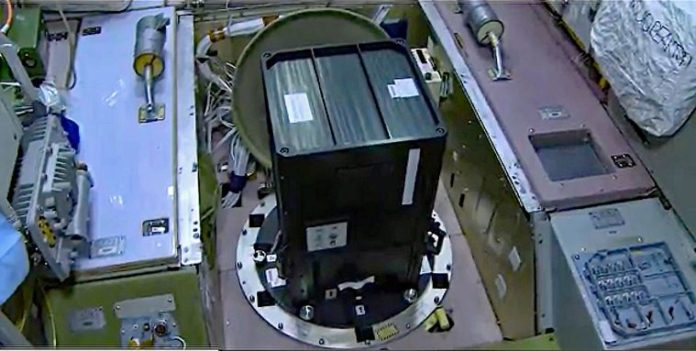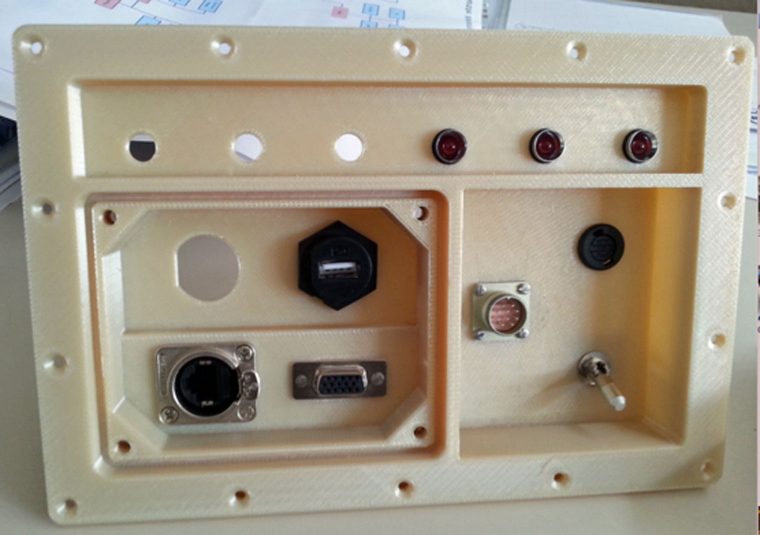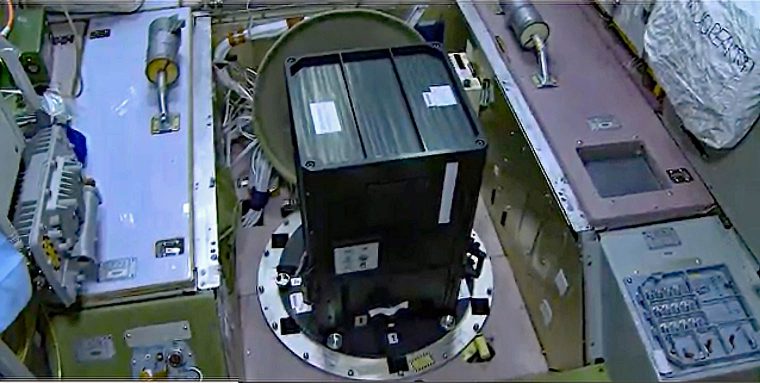
Following an ad hoc bilateral agreement between the Italian Space Agency (ASI) and the Russian Space Agency ‘Roscosmos’, Italian government research center, Istituto Nazionale di Fisica Nucleare (INFN – National Institute for Nuclear Physics) produces Mini EUSO, a cosmic UV telescope that is being used in the International Space Station.
The cosmic UV telescope integrates a certified 3D printed structure that has been produced by the Italian center’s Stratasys Fortus 450mc FDM 3D Printer.

The INFN is an Italian government research institute whose mission is to coordinate and conduct scientific research in nuclear, subnuclear and astroparticle physics.
The impact of 3D Printing in the fabrication of Mini EUSO
‘Mini-EUSO’, short for Multiwavelength Imaging New Instrument for the Extreme Universe Space Observatory, has been successfully placed on an earth-facing window of the ISS’ Russian Zvezda module, onboard a Soyuz rocket.

Legend: 3D printed Mini-EUSO successfully placed on an earth-facing window of the Russian Zvezda module of the ISS
“With an orbit of about 90 minutes, Mini-EUSO records all space and atmospheric objects and events within sight, including UV emissions from night-earth, transient luminous events, meteors, space debris and more,” explains Marco Ricci, Lead Researcher at Laboratori Nazionali di Frascati INFN and INFN Country Manager for Collaboration EUSO SPB2 Italia. “The final scientific objective is to produce a high-resolution map of the Earth in the UV range (300-400 nm), which is expected to significantly advance research on cosmic rays, but also serve as an important experiment for future space missions.”
Speaking of the impact of AM in the project, Ricci unveils that the production of the Mini-EUSO’s mechanical structure using 3D printing, enabled them to reduce the overall cost of the project by a factor of ten, as well as save around a whole year of development time.

It goes without saying that they also faced some challenges. In this specific fabrication, the challenge was to use a material that could meet the stringent certification requirements of the aerospace industry and the ISS, as well as bear the mechanical stress and vibrations of a rocket launch.
“We explored numerous ways in which we could achieve the expected performance while meeting material certification. We even built a full prototype in aluminum, one of the most commonplace materials for aerospace. But the results were far from expectation – the structure was too heavy and it did not provide the insulation required for the interior electrical currents,” explains Tommaso Napolitano, Head of Mechanics Design and Construction Department at INFN, Laboratori Nazionali di Frascati, Rome.
“As a result, we turned to our Fortus 450mc 3D Printer and found that the ULTEM™ 9085 resin offered the perfect alternative. Not only is the material extremely durable, but it’s lightweight. And crucially, it also offers exceptional insulation properties, as well as high chemical and thermal resistance. It’s fair to say that without the capability to print the Mini-EUSO structure in this material, we would not have met the ISS’ safety and weight restrictions.”
The Mini-EUSO project, coordinated and funded by ASI, has been developed by the JEM EUSO Collaboration (Joint Experiment Missions – Extreme Universe Space Observatory), a wider international program including France, Germany, Italy, Japan, Poland, Russia, Slovakia, Sweden, Switzerland and United States. The initiative aims to explore the origin and nature of ultra-high energy cosmic rays from space and will see the 3D printed Mini-EUSO telescope stay on the ISS for the next three years.
Remember, you can post free of charge job opportunities in the AM Industry on 3D ADEPT Media or look for
a job via our job board. Make sure to follow us on our social networks and
subscribe to our weekly newsletter : Facebook, Twitter, LinkedIn & Instagram ! If you want to be featured in the next issue
of our digital magazine or if you hear a story that needs to be heard, make
sure to send it to contact@3dadept.com

